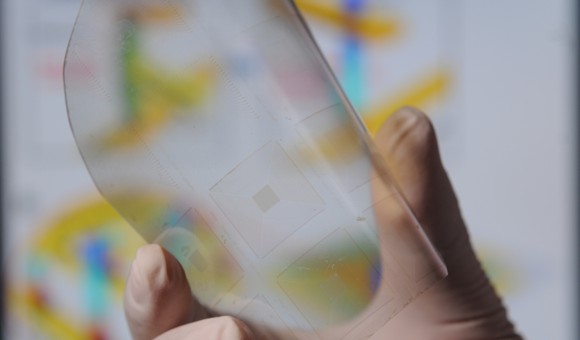Some areas of our skin, like the lips and fingertips, are more sensitive to the touch because of a greater density of receptors that translate mechanical force into neuronal signals. The sensory device built by scientists at Georgia Tech is a new kind of transistor that converts mechanical force into electricity. The force bends nanoscale wires made of zinc oxide. When the wires bend back, zinc and oxide ions create an electrical potential that is converted to electrical current of a few millivolts. Converting mechanical energy to electrical energy is known as the piezoelectric effect.
SEE ALSO: Amazing Aerogel: Strong as Steel, Light as Air
To enhance the sensor’s sensitivity, the group of engineers led by materials science and engineering professor Zhong Lin Wang used nanoelectronics that allowed them to increase sensor density and spatial resolution by 15-fold, which translates to a two to three order of magnitude boost in sensitivity. The density, resolution and sensitivity of the sensor approximates that of a human finger.
A paper featuring the device was published recently in Science.
Wang and his colleagues join a field they call “piezotronics” in which mechanical force generates electricity. In 2009 the group created a new type of transistor that doesn’t require a voltage. Because they can generate their own electric current with mechanical force alone, the transistors have the potential to draw their energy from the world around us instead of a battery. Wind, sound waves, even blood flow for body implants, a device powered with piezotronics can be made even smaller without the need for a power source. Even smartphones could be recharged just by using them.
SEE ALSO: Meet the World's Youngest Apple IIGS Programmer
Wang thinks the array could eventually be used to enable prosthetics to transmit a realistic sense of touch. They also think it could be used to improve touchscreen devices, give robots a finer touch for handling objects, or could be placed under the skin of burn victims. By connecting to intact nerves beneath the damaged skin, the sensor could replace actual skin and return sensation to the burn victim.
With the many needs to sense our environment, possible applications for the artificial skin are endless. Still, commercial applications of this technology are rare – there is much work still to be done. As more piezotronic devices become mainstream, their uses will only be limited by the creativity of those using them.

No comments:
Post a Comment